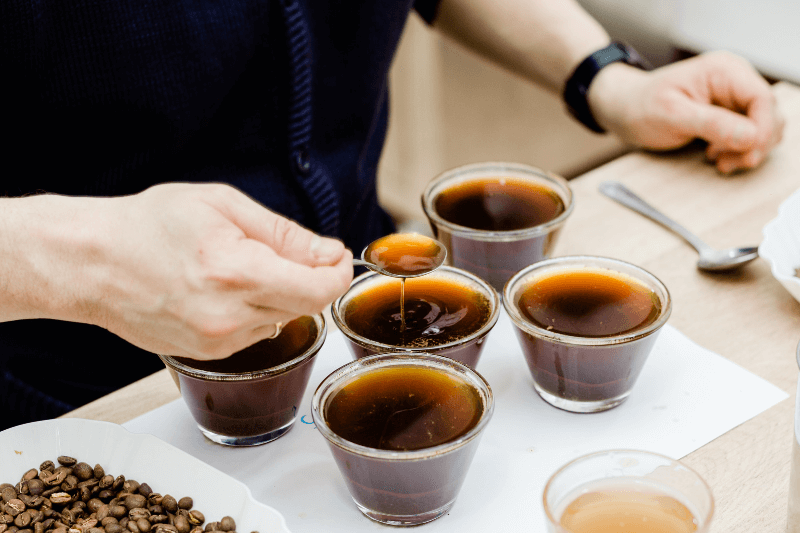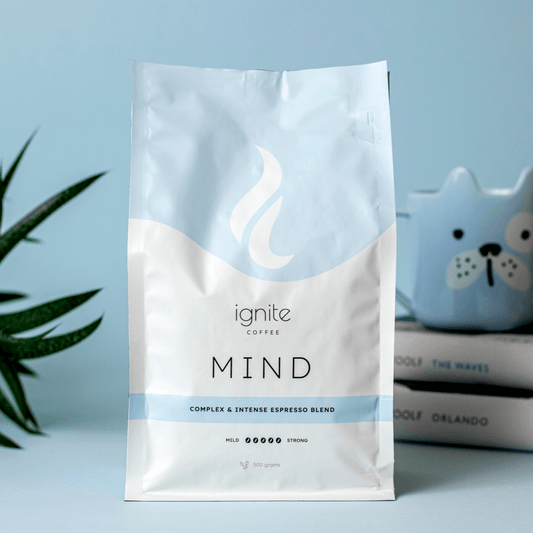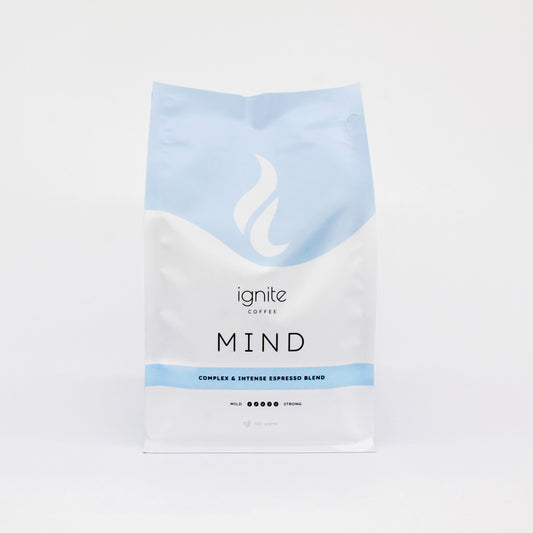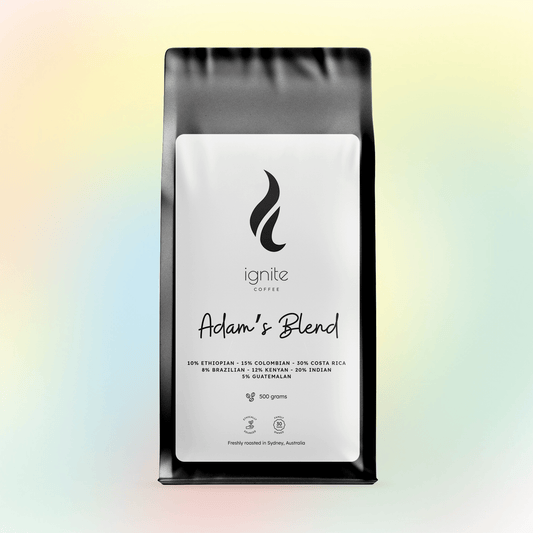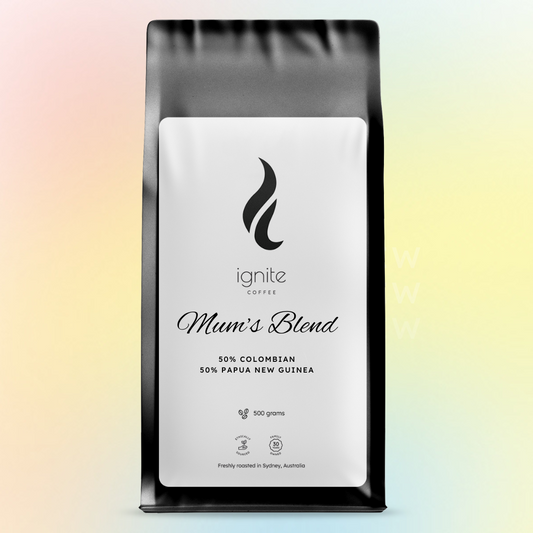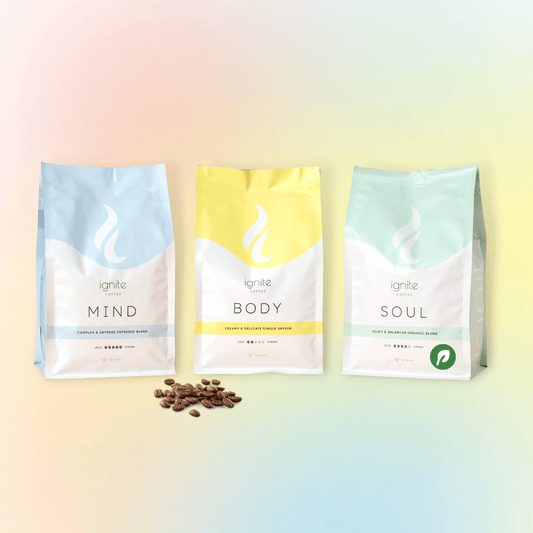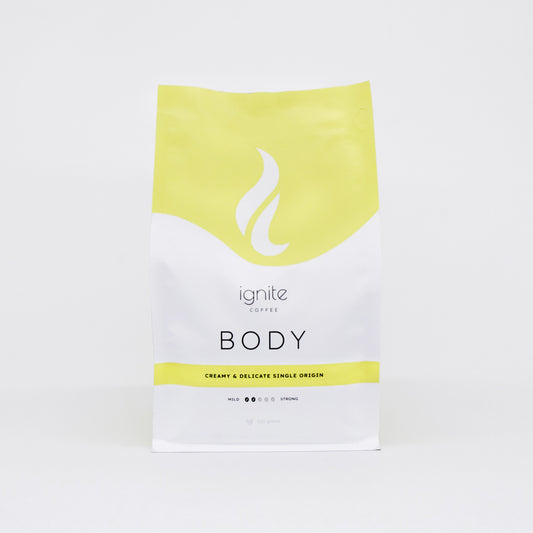Ever found yourself lost in translation while trying to make sense of the language and different words used to describe coffee?
Perhaps you've heard a barista at your coffee shop describe coffee using words like "acidity," "aroma," "balance," or "body," and felt unsure of what these terms actually mean. Or maybe you've wondered why your experience of coffee doesn't match up with their descriptions of coffee.
Is there an agreed set of words to describe coffee or is everything subjective?
A Standardised System of Words to Describe Coffee Flavour
The practice of describing coffee flavour and aroma using specific words and descriptors has been around for centuries, but it wasn't until 1995 that a standardised system for coffee tasting and evaluation was developed.
This system, known as the Specialty Coffee Association of America (SCAA) Flavor Wheel, provided a common language and framework for coffee professionals to use when evaluating the quality and flavour of coffee.

The SCAA coffee taster's flavour wheel was introduced in 1995 and updated in 2016.
The taster's flavour wheel includes specific words to describe coffee such as aroma, flavour, and aftertaste, as well as broader categories like "fruity," "spicy," and "herbal." Since the development of the SCAA Flavor Wheel, coffee descriptors have become an essential part of the coffee industry, used by specialty coffee roasters, growers, baristas, and enthusiasts worldwide to describe coffee flavour or how coffee tastes.
Let's dive into some of the more common coffee characteristics used by professional coffee tasters to describe the taste of coffee.
Words to Describe Coffee Acidity
Acidity refers to the perceived brightness or sharpness of the coffee flavour. This is not the same as the pH level or level of acid in the coffee, but rather the perceived tartness or sourness in the coffee taste.
A high acidity coffee can be described as lively, tangy, or bright, whereas a low acidity coffee can be described as smooth or mellow. If coffee acidity is too low though, it might be described as dull, unexciting and boring.
Acidity is often associated with fruitiness, and some of the most common flavours associated with high acidity coffees are citrus, berries, and apples. However, it can also be present in non-fruit flavours, such as a winey acidity in some coffees.
There are several factors that can affect the acidity in coffee, such as the coffee's origin, growing altitude, processing method, coffee bean type and roast level.
Coffee Acidity from Different Regions
Coffees grown in high-altitude regions of over 1,300 meters tend to be more acidic due to the slower maturation of the bean as the plant focuses on reproducing and developing the bean than growing.
Some examples of regions from the coffee belt that grow high altitude coffee include Ethiopia, Colombia, Kenya, Guatemala, and Papua New Guinea. If you're looking for a smoother coffee, you'll find a good match in Brazilian or Sumatran coffee.

Growing elevations in Colombia range from 1,200 meters to 1,800 meters above sea level, yielding highly acidic beans.
Differences Across Bean Type, Roast Level and Grind
Arabica coffee beans grow and develop slower. This extra time for developing flavours produces a brighter taste making Arabica more acidic than Robusta.
Coffee roast levels also play a part in coffee acidity. As dark roasted coffee retain less acid during the roasting process, they generally have less prominent acidity than light roasted or medium roasted coffee.
It's worth noting that acidity in coffee is different from bitterness. While acidity enhances coffee's other characteristics and can give it a bright and lively taste, bitterness is a harsh, unpleasant taste. This bitter flavour can come from over-extraction or over-roasting.
Ways to Describe Coffee Aroma
When we talk about coffee aroma, we're referring to the different scents and fragrances that are released when coffee is roasted and brewed and they can greatly influence the way we perceive the taste of the coffee.
Aroma is often described using a wide range of words, such as floral, fruity, spicy, earthy, and nutty smell. These aroma words can be used to describe both the dry aroma (the scent of the coffee before it is brewed) and the wet aroma (the scent of the coffee after it is brewed).
Where Coffee Aroma Comes From
The aroma of coffee is created by the volatile compounds that are released during the roasting process.
Green coffee beans do have an aroma but they are limited and different from roasted coffee. As green beans are roasted, their sugars, other carbohydrates and nitrogen compounds develop into aromatic compounds that contribute to the coffee flavour profile.
These compounds can also be influenced by a variety of factors, such as the coffee bean's origin, processing method, roasting process, and brewing method.

The roasting process releases aromatic compounds that influence the overall taste and flavour of coffee.
Factors that Affect the Smell of Coffee
Coffees that are grown in different regions of the world can have distinct aromas due to differences in climate, soil, and other environmental factors.
For example, coffee from Ethiopia and Colombia may have a distinct sweet smell often described as floral and fruity aroma, while coffee from Sumatra may have an earthy and spicy aroma.
Similarly, coffees roasted to different levels can produce different profiles, with lighter roasts typically preserving herb, floral and fruity notes, and a dark roast having more burnt, earthy and smoky notes.
As you brew coffee, the hot water in your cup further extracts different chemicals from the coffee, producing even more fragrances.
How to Describe Coffee Body
When we talk about coffee body, we're referring to the way that the coffee feels in your mouth. It relates to the weight, thickness, and texture of the coffee.
Brewed coffee with a full body will feel heavy and dense in your mouth, while a coffee with a light body will feel more thin and watery.
Words to Describe Coffee Body
Coffee can be described as being light, medium, or full-bodied.
A light-bodied coffee has a thin and watery texture, whereas a full-bodied or heavier body coffee has a thick and heavy texture.
When trying to identify what coffee body you like best, it might be helpful to ask yourself if you like your coffee a bit more watery like tea (light), rich like a good red wine (medium) or thick like hot chocolate (full).
You can also consider the coffee's overall flavour profile. Full-bodied coffee may pair well with bold and complex notes, while lighter-bodied coffee may be better suited to more delicate and nuanced notes.

Do you prefer your coffee to be light-bodied like tea, medium-bodied like red wine or full-bodied like hot chocolate?
Factors that Influence Coffee Texture
Coffee texture is influenced by the roasting process, brewing method, and their origin.
For example, coffee from certain regions may naturally have a fuller body due to the characteristics of the beans grown in that area. Coffee from Latin America tends to be medium-bodied while coffee from Indonesia tends to be heavier-bodied.
Additionally, dark roasts tend to be heavier-bodied than lighter roasts, as the roasting process causes the beans to expand and become less dense.
Your brewing method also plays a significant role in determining the body of the coffee. Coffees that are brewed using immersion methods, such as French Press or espresso, tend to be more full-bodied, as the coffee grounds are in direct contact with the water for a longer period of time.
On the other hand, brewed coffee using drip brewing or pour over methods can produce a lighter-bodied coffee, as the water passes through the grounds more quickly.

Brewing with a French Press tends to produce a full-bodied cup of coffee. Product: Minimalist French Press from Timemore
Exploring Coffee Balance
When we talk about balance, we're referring to the overall harmony and equilibrium of the brewed coffee's flavour profile. In a balanced cup, all of the different coffee flavour elements work together in harmony, creating a well-rounded and enjoyable drinking experience.
A well-balanced cup has a pleasant and complex flavour profile. This means that no single element overpowers the others in coffee experience, and there is a pleasant interplay between sweetness, brightness, bitterness, and other coffee flavour components.
Achieving balance in a cup of coffee can be a delicate art, as it requires careful attention to every stage of the coffee-making process.
For example, selecting high-quality beans for blending, roasting them to the appropriate level, and brewing them using the correct technique can all contribute to achieving balance. Coffees that are not well-balanced may taste too acidic, too bitter, or too sweet.
Balanced vs Unbalanced coffee
So are unbalanced coffees no good? Not necessarily. Some blends could lean on a dominating characteristic like a very citrusy or very earthy flavour and still produce a tasty and wonderful drink.
When evaluating a coffee's balance, it's important to pay attention to how the different flavour components interact with one another. Coffee that's highly acidic may need to be balanced with some sweetness to prevent it from tasting too sour or tart.
Similarly, a highly bitter coffee may need to be balanced with some acidity to create a more complex and nuanced flavour profile.

Our MIND espresso blend is made with three varieties and is well-balanced. While our single origin from Costa rica, BODY, and 100% organic blend, SOUL, are both proportionately balanced.
Getting a better understanding of all the ways to describe coffee taste can help you better understand the nuances and complexities of your brewed coffee.
Or at the very least, give you the right words for your morning chat with your barista.
Putting it into Practice
Keen to see what flavour profile you produce when you blend the bright acidity of beans from Guatemala with the aromatic complexity of Indian coffee beans?
Get creative and create your own custom coffee blend! With our range of 11 specialty coffee beans from around the world, you can come up with a well-balanced blend or discover a new exciting flavour profile.
Play with 11 specialty coffee beans to create your own coffee blend
Each bag ships with a custom label with the composition of your blend and a unique name of your choice to make it truly your own. It's the perfect addition to your coffee station or as a hyper personalised gift for a coffee lover.
Click below to get started:

